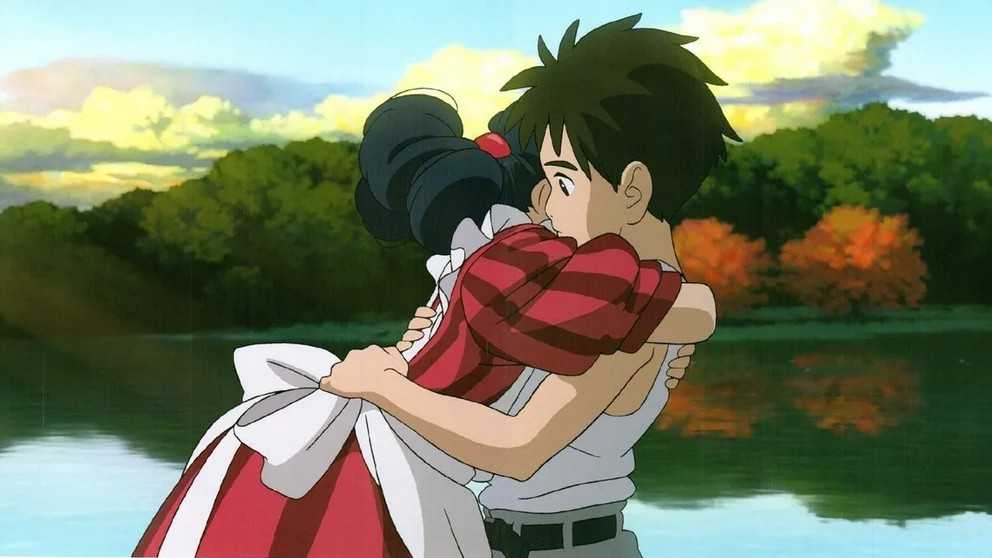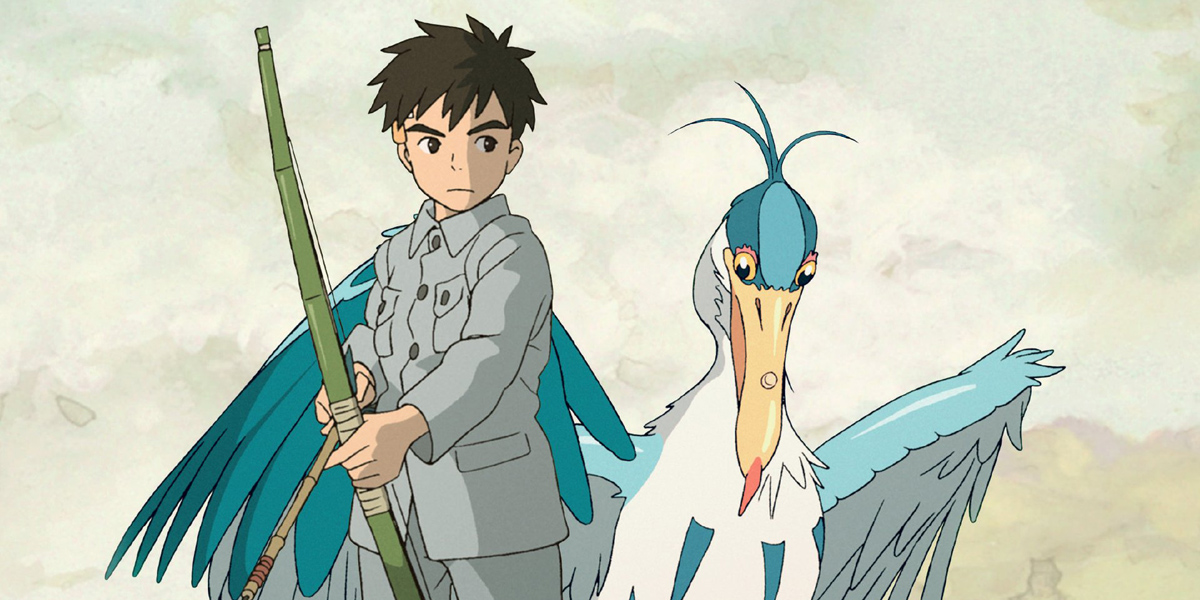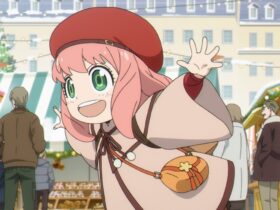Let’s discover together, in this dedicated review, the strengths and weaknesses of Hayao Miyazaki’s latest film, which recently also arrived in Italian cinemas: let’s discover The Boy and the Heron together
ORIGINAL TITLE: How do you guys live? Kimi-tachi wa dō ikiru ka. TYPE: animation, fantastic. NATION: Japan. REGIA: Hayao Miyazaki. ORIGINAL DUBBING CAST: Soma Santoki, Yoshino Kimura, Ko Shibasaki, Masaki Suda, Aimyon, Shoei Hino, Takuya Kimura, Kaoru Kobayashi, Jun Kunimura, Karen Takizawa, Keiko Takeshita, Jun Fubuki, Sawako Agawa, Shinobu Otake. ITALIAN DUBBING CAST: Giulio Bartolomei, Federica De Bortoli, Chiara Gioncardi, Stefano Dori, Lucrezia Marricchi, Rodolfo Bianchi, Gianfranco Miranda, Paola Giannetti. DURATION: 124 minutes. DISTRIBUTOR: Lucky Red. CINEMA EXIT: 01/01/2024
An announced retirement, but one that every fan of Japanese cinema, specifically “Ghibliana”, never really wanted to believe in. And perhaps not even Hayao Miyazaki himself wants to believe that the time has really come to put the oars in the boat, despite the mass of ideas, concepts and stories that he still would like to tell. The Boy and the Heron arrives more than ten years after that press conference dedicated to The Wind Rises in which the director had candidly announced, after talking about it for many years, that he wanted to officially retire from making feature films. And in this period of time, in fact, he dedicated himself to other things: short films, advertising logos and other minor things. Until the production of The Boy and the Heron was made known: we’ll tell you about it in this review.
Gray heron | The Boy and the Heron review
The Boy and the Heron is actually the Italian adaptation of a completely different Japanese title. In the original language, Hayao Miyazaki’s latest (?) work is in fact entitled “Kimi-tachi wa dō ikiru ka”, literally “And how will you live?”, which is actually a 1937 novel by Genzaburo Yoshino from which the Ghibli film permeates the title and some themes, but not the subject. It was born from a rather long and tortuous gestation, both due to the COVID-19 pandemic and by the express will of Miyazaki himself, which began in 2016 and ended in 2022. In the summer of 2023 the film appears in Japanese theaters without a great advertising campaign and arrives in Italy on January 1st.

A feather in the dusk | The Boy and the Heron review
We are therefore dragged into 1943, in the midst of the Pacific War between the Allies and the Japanese Empire, and, more specifically, in Mahito’s shoes. The young teenager suffers the trauma of losing her mother Hisako in a fire in the hospital where the woman worked, but not only that. The following year, his father Shoichi remarries Hisako’s younger sister, Natsuko, and therefore finds himself having his aunt as his second mother. To get away from the cruelty of war, Shoichi decides to take Mahito with him to the suburban estate of the young Natsuko, who has become pregnant by her ex-brother-in-law, and inhabited by the woman and a large group of elderly housekeepers, who immediately begin to take care of the young.
Mahito is unable to get used to this new and quiet country life, just as he is unable to settle in at school or create new friends. One day, unexpectedly, a strange gray heron (if you don’t know what it is, we refer you to the eternal Wikipedia) leads him into the thick of the forest, where he finds an ancient abandoned tower, whose purpose is unknown to Mahito (and the viewer). The heron becomes more and more intrusive and insistent, so much so that Mahito is forced to arm himself by building a bow and a single arrow, also made up of the heron’s own feathers, to chase it away.

Silence | The Boy and the Heron review
Returning from school one day, Mahito gets involved in a fight with some of his peers. Tired of having to go to class and tired of living in that situation, he intentionally hits himself in the temple with a stone, injuring himself quite seriously. Helped by the housekeepers and later by his father, Mahito spends his convalescence bored by the gray heron. And precisely in these circumstances, the young man finds a book, entitled “And how will you live?”, bequeathed to him by his late mother. While he is involved in reading, Mahito sees Natsuko disappear into the thick of the forest. And it is from here that the story of The Boy and the Heron really takes flight. And this is where we stop.
We want to avoid any type of spoiler both because, as always, this is not the place to talk freely about the film (since you are in front of a review anyway), and because we are convinced that the first viewing of The Boy and the Heron should be as clueless as ever. Just as Miyazaki and Studio Ghibli have decided not to release trailers or promotional images before the film’s release (other than a single poster), we are also convinced that the less you know before going to the cinema, the more you will be able to truly enjoy it.

The corridor door | The Boy and the Heron review
The film is certainly one of the most inspired and angry ever shot by Miyazaki, but it is also probably one of the most complex, abstract and difficult to understand at a first viewing. Mahito’s journey starts from rather simple premises, as the director has always taught us, and then becomes a true Dante-esque descent into the depths of the young man’s psyche. And we don’t quote Dante Alighieri like that, because he’s cool, but Miyazaki himself inserted a verse from The Divine Comedy right at the entrance to the tower. “Make me the divine power”, literally “I am the work of divine power” is the beginning of those famous verses placed right at the gates of Dante’s hell:
…give me divine power, supreme wisdom and first love. In front of me there are no created things other than eternal, and I am eternal. Abandon all hope, you who enter.
Reincarnation | The Boy and the Heron review
And this to Dante is just one of the many literary and cinematographic quotes, even to the author’s own films, scattered here and there in the film. And this is perhaps precisely the focal point for understanding whether or not to go to the cinema to see The Boy and the Heron, the cornerstone of this review. Most likely, you will be able to appreciate, partially understand and accept Mahito’s long journey, his growth and evolution, only if you are connoisseurs and enthusiasts of the Ghibli universe and, specifically, of what Hayao Miyazaki represented for all cinematography.
Its greatest value and at the same time its greatest flaw is precisely this: the internal chaos that governs it. Non-enthusiasts will find it difficult to leave the theater managing to tell even just part of the film, just as even enthusiasts themselves will have experienced it emotionally, but they will still need a second one (and third, perhaps in the original language) vision to digest it completely.

A girl of fire | The Boy and the Heron review
We cannot fail to underline the technical and aesthetic beauty with which The Boy and the Heron presented itself at the cinema. A work almost completely handmade, a gift that Studio Ghibli has continued to give us over time, despite the advancement of technologies. A riot of colors, spectacular animations, evocative settings that go from dreamlike to terribly real, for the creation of a film which, according to what was said in some interviews by the producer Toshio Suzuku, could be the most expensive ever made in Japanese territory. If you have the chance, we absolutely recommend seeing it at the cinema: it deserves every penny, visually speaking. Also because the dubbing and the Italian adaptation, by Lucky Red, are really of a good standard.

Farewell
So we ask ourselves, at the end of this dispassionate review of The Boy and the Heron: what is this film really? It is not a real will, a legacy to posterity with which to be remembered forever. The Boy and the Heron is actually the intimate collection of an author who was able to create an infinite universe, and who will never be forgotten because it burns with an inextinguishable flame. It is the sum of a man, who gave as much as he received, and who was able to excite entire generations of young and (now, unfortunately) less young people. It is the last great masterpiece, but at the same time perhaps the film that will be least understood, accepted and appreciated by the general public. It’s a period at the end of a sentence, which ends Hayao Miyazaki’s great book. And this time, let’s hope he can seriously enjoy his retirement. To our detriment.
Points in favor
- Technically excellent
- The sum of the work of a timeless artist
- An inspired, profound and hermetic journey…
Points against
- …maybe too abstract
- Not suitable for those unfamiliar with the author
Looking for new movies and new TV series to watch?
Discover the new subscription to Disney+, the streaming home of Disney, Marvel, Pixar, Star Wars, National Geographic and now Star. Subscribe now to only 8.99 euros per month on this page.
Bonus: how to have a subscription to streaming platforms and save
There are some services that allow you to share your account best streaming platforms (Netflix, Prime Video, Disney Plus, HBO Max, Paramount Plus, etc.) with other people like GamsGo, GoSplit or CooSub. Thanks to GamsGo, GoSplit and CooSub it is possible to purchase, at a negligible pricea subscription shared with other users of the in platform easy, fast and safe way.
















Leave a Reply
View Comments